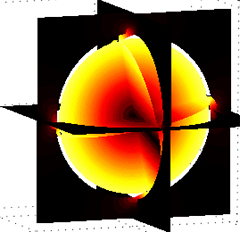
Electromagnetic metamaterials, which are composite structures displaying highly dispersive properties enabling artificial magnetism, have been introduced by John Pendry at the turn of the 21st century, in collaboration with his colleagues in London and Duke Universities.
At the same period, the group of Ping Sheng in Hong-Kong has introduced the concept of acoustic metamaterials, which are also locally resonant structures displaying strong frequency dispersion enabling negative effective mass density and compressibility. Subsequent theoretical and experimental papers by a handful of research groups worldwide, notably that of Nicholas Fang at MIT and Steven Cummer at Duke University, have raised the interest of a general audience in this new field of physics.

However, back in 1987, the group of Roy Lakes at Iowa University had proposed what could be considered as the first mechanical metamaterial in the form of a foam that displays a (static) negative Poisson ratio, for which mathematicians Graeme Milton and Andrei Cherkaev at the University of Utah found a general framework known as Pentamode metamaterials.
The group of Martin Wegener at Karlsruhe Institute of Technology, has further the theoretical and experimental metamaterials of auxetics with Poisson ratios ranging from (almost) -1 to 0.5 in the past five years. Our group at Institut Fresnel has taken an active part in the developments of these acoustic and mechanical metamaterials, notably in the area of multistructures, a concept first put forward in the 1999 research monograph by mathematicians Vladimir Kozlov, Alexander Movchan and Vladimir Mazya at Linkoping and Liverpool Universities .
An example of multistructure is a solid shaped as Pendry’s split ring resonators, that displays low frequency, strongly localized longitudinal, bending and rotational modes, that open stop bands useful for focusing and shielding effects.
Researchers at Institut Fresnel have also proposed first theoretical designs of mechanical cloaks that require a concept of elastic chirality known as Cosserat media. Experimental demonstration is ongoing with the groups of Patrick Sebbah at Institut Langevin and Martin Wegener at KIT.
Potential applications are large scale multistructures for protection of sensitive infrastructures (such as nuclear plants), see artistic view below by Bogdan Ungureanu, and simulation of rotational motion of a resonator by B. Ungureanu and Younes Achaoui.
Selected publications :
Seismic waves damping with arrays of inertial resonators
Younes Achaoui, Bogdan Ungureanu, Stefan Enoch, Stéphane Brûlé, Sébastien Guenneau Extreme Mechanics Letters (in press) http://www.sciencedirect.com/science/article/pii/S2352431616300281
Auxetic-like metamaterials as novel earthquake protections
Bogdan Ungureanu, Younes Achaoui, Stefan Enoch, Stéphane Brulé, Sébastien Guenneau
EPJ Applied Metamaterials, EDP Sciences, 2016, 2, pp.17.
Elastic metamaterials with inertial locally resonant structures: Application to lensing and localization
Davide Bigoni, Sébastien Guenneau, A.B. Movchan, Michele Brun
Physical Review B : Condensed matter and materials physics, American Physical Society, 2013, 87, pp.174303
Platonic metamaterials
Researcher at Institut Fresnel have made the first proposal of an invisibility cloak for Lamb waves in thin elastic plates back in 2009 (PhD Thesis of Mohamed Farhat).
The group of Martin Wegener at Karlruhe Institute for Technology has experimentally demonstrated this concept in 2012. There are ongoing experiments in collaboration with the group of Nicolas Vandenberghe at IRPHE.

An ANR project titled PLATON (with Patrick Sebbah Principal investigator at Institut Langevin) led to experimental demonstration of an image via negative refraction in a Duraluminium plate structured with holes (upper figure) and an image in a fisheye lens via variation of the plate thickness (lower figure).
Last, but not least, a collaboration got started with the group of Philippe Roux at ISTerre (Grenoble) on control of Lamb waves with forests of rods on plates.

Selected publications :
Time-Driven Superoscillations with Negative Refraction
Marc Dubois, Emmanuel Bossy, Stefan Enoch, Sébastien Guenneau, Geoffroy Lerosey, Patrick Sebbah
Physical Review Letters, American Physical Society, 2015, 116 (013902), pp.5
Directional cloaking of flexural waves in a plate with a locally resonant metamaterial
Andrea Colombi, Roux Philippe, Sébastien Guenneau, Matthieu Rupin
Journal of the Acoustical Society of America, Acoustical Society of America, 2015, 137
Experiments on Maxwell’s fish-eye dynamics in elastic plates
Gautier Lefebvre, Marc Dubois, Romain Beauvais, Younes Achaoui, Ros-Kiri Ing, Sébastien Guenneau, Patrick Sebbah
Applied Physics Letters, American Institute of Physics, 2015, 106, pp.024101.
Steering in-plane shear waves with inertial resonators in platonic crystals
Younes Achaoui, Andre Diatta, Sébastien Guenneau
Applied Physics Letters, American Institute of Physics, 2015, 106 (223502), pp.4.
Biharmonic split ring resonator metamaterial: Artificially dispersive effective density in thin periodically perforated plates
Mohamed Farhat, Stefan Enoch, Sebastien Guenneau
EPL, European Physical Society/EDP Sciences/Società Italiana di Fisica/IOP Publishing, 2014, 107, pp.44002.
Platonic Scattering Cancellation for Bending Waves in a Thin Plate
Mohamed Farhat, Pai-Yen Chen, Hakan Bagci, Stefan Enoch, Sébastien Guenneau, Andrea Alu
Scientific Reports, Nature Publishing Group, 2014, 4 (4644),
Moulding and shielding flexural waves in elastic plates
Tryfon Antonakakis, Richard Craster, Sébastien Guenneau
EPL, European Physical Society/EDP Sciences/Società Italiana di Fisica/IOP Publishing, 2014, 105 (5), pp.54004.
Flat lens for pulse focusing of elastic waves in thin plates
Marc Dubois, Mohamed Farhat, Emmanuel Bossy, Stefan Enoch, Sébastien Guenneau, Patrick Sebbah
Applied Physics Letters, American Institute of Physics, 2013, 103 (071915)

Contact: Sébastien Guenneau


 ResearchGate
ResearchGate Flux RSS
Flux RSS